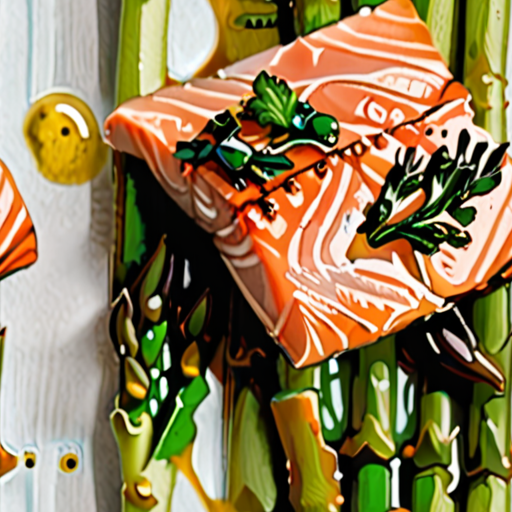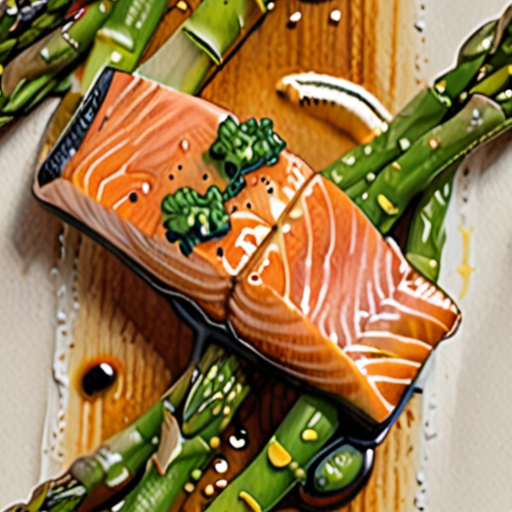When it comes to cooking fish, there’s nothing quite like the perfect pan-seared dish to impress family and friends alike. Whether you’re a seasoned chef or a beginner in the kitchen, mastering sautéed fish recipes is a valuable skill that can elevate your culinary game and provide endless opportunities for creativity. From choosing the right type of fish to experimenting with different cooking techniques and marinades, the possibilities are vast and exciting. In this comprehensive guide, we’ll delve into the world of sautéed fish recipes, exploring the best fish for sautéing, the benefits of using butter versus oil, and the tastiest ways to cook fish. We’ll also cover essential steps for preparing fish before frying, creating delicious marinades, and sharing simple and quick options for busy home cooks.

Best Fish for Sautéing
When it comes to sautéing fish, there are several options available, each with its own unique characteristics and flavors. As a seafood enthusiast, I’m excited to share my knowledge with you on the best fish for sautéing.
- Fatty Fish: Fatty fish like salmon and mackerel are perfect for sautéing due to their high fat content, which makes them tender and flavorful.
- Delicate Fish: Delicate fish like sole and flounder are ideal for sautéing because they cook quickly and retain their moisture.
- Mild Flavored Fish: Mild flavored fish like cod and tilapia are great for sautéing as they absorb flavors well and are relatively inexpensive.
Some popular fish species for sautéing include:
- Walleye: Known for its firm texture and mild flavor, walleye is a great choice for sautéing.
- Perch: Perch has a sweet flavor and a delicate texture, making it perfect for sautéing.
- Northern Pike: Northern pike has a rich flavor and a firm texture, making it ideal for sautéing.
- Bluegill: Bluegill has a mild flavor and a soft texture, making it suitable for sautéing.
- Bass: Bass has a rich flavor and a firm texture, making it perfect for sautéing.
To enhance the flavor of your sautéed fish, try adding aromatics like garlic, ginger, and lemon juice to your pan. You can also experiment with different seasonings and spices to give your dish a unique twist. Whether you’re a seasoned chef or a beginner cook, sautéing fish is a great way to prepare a delicious and healthy meal. By choosing the right type of fish and experimenting with different flavors, you can create a truly unforgettable dining experience.
Is it Better to Sauté Fish in Butter or Oil?
When it comes to cooking fish, choosing the right cooking medium can make all the difference in achieving a delicious and tender final product.
- Butter: While butter can add a rich and creamy flavor to your fish, it’s not the best choice for sautéing due to its low smoke point. Butter can easily burn and develop an unpleasant flavor, which may overpower the delicate taste of the fish.
- Oil: On the other hand, oil is a much better option for sautéing fish. Vegetable oils like avocado oil, grapeseed oil, or peanut oil have a high smoke point, making them ideal for high-heat cooking. They also won’t burn or smoke as easily as butter, allowing you to achieve a crispy crust on your fish without compromising its texture.
That being said, there are some exceptions to consider. If you’re looking to add a nutty flavor to your fish, you can try using clarified butter or browned butter. However, these methods require careful attention to prevent burning, and it’s still essential to use a small amount of oil to prevent the butter from smoking.
In general, it’s recommended to use a combination of both butter and oil for sautéing fish. Start by heating a small amount of oil in a pan over medium-high heat, then add a pat of butter once the oil is hot. This will allow you to take advantage of the richness of butter while minimizing the risk of burning.
Some popular fish recipes that use oil as the primary cooking medium include our Fish Tacos Recipe and our Seared Salmon Recipe . These recipes showcase the versatility of oil in cooking fish and offer a range of flavors and textures to suit different tastes.
Ultimately, the choice between butter and oil comes down to personal preference and the type of dish you’re trying to create. By understanding the characteristics of each cooking medium and experimenting with different combinations, you’ll be well on your way to becoming a master fish cook.
Tips for Cooking Fish with Oil:
- Choose a high-quality oil with a high smoke point, such as avocado oil or grapeseed oil.
- Heat the oil in a pan over medium-high heat until it reaches the desired temperature.
- Add a small amount of oil to the pan, just enough to coat the bottom.
- Place the fish in the pan and cook for 2-3 minutes per side, or until cooked through.
- Remove the fish from the pan and let it rest for a few minutes before serving.
Tips for Cooking Fish with Butter:
- Choose a high-quality butter with a mild flavor, such as European-style butter.
- Melt the butter in a pan over medium heat until it reaches a golden brown color.
- Add a small amount of oil to the pan to prevent the butter from burning.
- Place the fish in the pan and cook for 2-3 minutes per side, or until cooked through.
- Remove the fish from the pan and let it rest for a few minutes before serving.

The Tastiest Way to Cook Fish
When it comes to cooking fish, there are several methods to choose from, each with its own unique flavor profile and texture.
- Pan-Seared Fish: A classic method that involves searing the fish in a hot skillet with some oil and seasonings. This technique helps to lock in the moisture and creates a crispy crust on the outside.
- Baked Fish: Baking fish is a great way to cook it evenly and retain its delicate flavor. Simply season the fish with herbs and spices, place it on a baking sheet, and bake in the oven until cooked through.
- Grilled Fish: Grilling fish adds a smoky flavor and a nice char on the outside. Make sure to oil the grates before adding the fish to prevent sticking.
- Poached Fish: Poaching fish is a moist-heat cooking method that helps to preserve the delicate flavor and texture of the fish. Simply submerge the fish in liquid (such as water or broth) and cook until done.
Tips for Cooking Delicious Fish
- Choose Fresh Fish: Freshness is key when it comes to cooking fish. Look for fish with bright eyes, firm flesh, and a pleasant smell.
- Don’t Overcook: Fish can quickly become dry and tough if overcooked. Use a thermometer to check for doneness, and remove from heat when it reaches the recommended internal temperature.
- Add Flavorful Seasonings: Herbs and spices can elevate the flavor of fish significantly. Try using lemon juice, garlic, and dill for a Mediterranean-inspired dish.
- Experiment with Different Cuts: Different cuts of fish have varying levels of fat and texture. Experiment with different cuts to find your favorite.
Popular Fish Recipes
- Pan-Seared Salmon
- Baked Cod with Lemon and Herbs
- Grilled Tuna Steak
- Poached Trout with Dill and Garlic

Soaking Fish Before Frying
When it comes to preparing fish for frying, soaking it in the right liquid can make all the difference in achieving a crispy exterior and a tender interior.
- Buttermilk Marinade: Soaking fish in a buttermilk marinade is a popular method that helps to tenderize the meat and adds a tangy flavor. The acidity in the buttermilk helps to break down the proteins in the fish, making it easier to cook and resulting in a more tender final product.
- Ice Water Marinade: An ice water marinade is another effective way to prepare fish for frying. By soaking the fish in cold water, you can help to remove impurities and excess moisture, resulting in a crisper exterior and a flakier texture.
- Other Options: In addition to buttermilk and ice water, there are several other liquids that you can use to soak fish before frying. Some options include milk, yogurt, and even beer. Each of these liquids has its own unique benefits and can help to enhance the flavor and texture of the fish.
At Only Fish Recipes , we recommend trying out different soaking methods to see what works best for you. Whether you prefer the tanginess of buttermilk or the crispness of an ice water marinade, there’s a soaking liquid out there that’s sure to elevate your fried fish game.
Tips for Soaking Fish
- Acidity Matters: When choosing a soaking liquid, consider the acidity level. Acidic liquids like buttermilk and vinegar can help to break down proteins and tenderize the fish.
- Cold Water is Key: Cold water is essential for removing impurities and excess moisture from the fish. This helps to result in a crisper exterior and a flakier texture.
- Don’t Overdo it: Be careful not to over-soak the fish, as this can lead to a mushy texture. Aim for a soaking time of around 30 minutes to an hour.
Frequently Asked Questions
Q: What is the best soaking liquid for fish?
A: The best soaking liquid for fish depends on personal preference and the type of fish being used. Buttermilk and ice water are two popular options that can help to tenderize and crisp up the fish.
Q: How long should I soak the fish?
A: Aim for a soaking time of around 30 minutes to an hour. Any longer than this can lead to a mushy texture.
Do You Dip Fish in Egg or Milk Before Frying?
The age-old debate among fishermen and foodies alike has sparked a heated discussion – do you dip fish in egg or milk before frying? As a seasoned chef and advocate for seafood enthusiasts, I’m here to shed light on the benefits of each method.
- Egg Dipping: Dipping fish in beaten eggs creates a delicate crust that enhances the texture and flavor of the fish. The proteins in the eggs bind to the surface of the fish, resulting in a crispy exterior and a tender interior.
- Milk Dipping: On the other hand, dipping fish in milk produces a creamy coating that adds moisture and richness to the dish. The casein in milk helps to tenderize the fish, making it perfect for delicate species like sole or flounder.
Choosing the Right Method
The choice between egg and milk dipping ultimately depends on personal preference and the type of fish being cooked. If you’re looking for a crunchy exterior and a tender interior, egg dipping is the way to go. However, if you prefer a moist and flavorful dish, milk dipping is the better option.
Tips and Variations
To take your fish-frying game to the next level, try experimenting with different seasonings and marinades. A mixture of paprika, garlic powder, and lemon zest can add a smoky flavor to your fish, while a marinade of olive oil, soy sauce, and honey can give it a sweet and savory taste.
Remember, the key to achieving a perfect fry lies in the quality of the ingredients and the technique used. Whether you choose to dip your fish in egg or milk, make sure to handle it gently and cook it evenly to prevent overcooking.
Conclusion-Free Tips
For a lighter coating, try using a mixture of flour and cornstarch instead of eggs or milk. This will result in a crispy exterior without adding excess calories. Alternatively, you can use panko breadcrumbs for a Japanese-inspired crunch.
Experiment with different types of milk, such as almond or coconut milk, for a dairy-free alternative. And don’t be afraid to get creative with your seasonings and marinades – the possibilities are endless!

Marinating Fish Before Frying
To get the most out of your fried fish, it’s essential to marinate it beforehand.
- Olive Oil, Lemon, and Herb Marinade: Mix together 1/2 cup olive oil, 2 tablespoons freshly squeezed lemon juice, and chopped fresh herbs like cilantro, basil, rosemary, or thyme. Brush the marinade onto the fish and let it sit for about 5 minutes before cooking.
- Lime Juice and Ginger Marinade: Combine 1/4 cup lime juice, 2 cloves minced garlic, and 1 tablespoon grated ginger. Let the mixture sit for 10-15 minutes to allow the flavors to meld.
- Asian-Inspired Marinade: Whisk together 1/4 cup soy sauce, 2 tablespoons honey, 2 cloves minced garlic, and 1 tablespoon grated ginger. Marinate the fish for 30 minutes to an hour to infuse the flavors.
- Citrus-Herb Marinade: Zest 1 orange and mix it with 1/4 cup olive oil, 2 tablespoons freshly squeezed orange juice, and chopped fresh herbs like parsley or dill. Let the mixture sit for 10-15 minutes before brushing it onto the fish.
- Spicy Marinade: Combine 1/4 cup hot sauce, 2 tablespoons olive oil, and 1 teaspoon smoked paprika. Let the mixture sit for 10-15 minutes to allow the flavors to meld.
When choosing a marinade, consider the type of fish you’re using and the flavor profile you want to achieve. Some popular options include citrus-herb, Asian-inspired, spicy, and classic olive oil-lemon herb.
Remember to always pat dry the fish before dredging it in flour or breading for frying. This helps the coating adhere evenly and prevents excess moisture from affecting the texture of the fish.
By marinating your fish before frying, you’ll unlock a world of flavors and textures that will elevate your dish to the next level.
Conclusion
In conclusion, marinating fish before frying is a simple yet effective way to enhance the flavor and texture of your dish. By experimenting with different marinades and seasonings, you can create a unique and delicious flavor profile that will impress your friends and family.

0 Comments